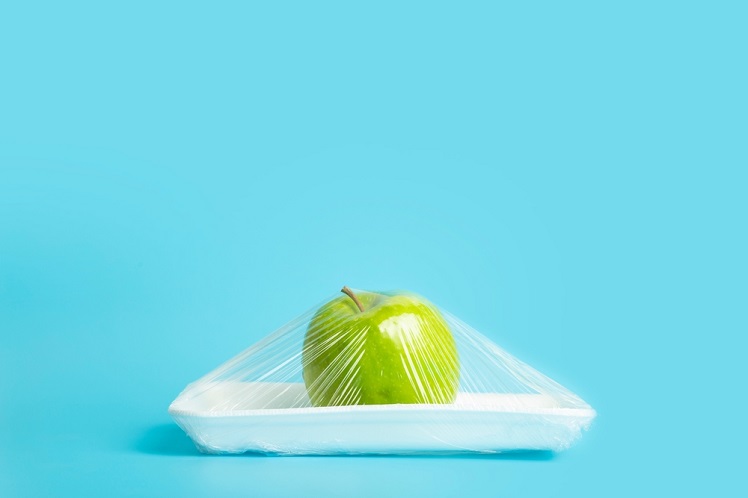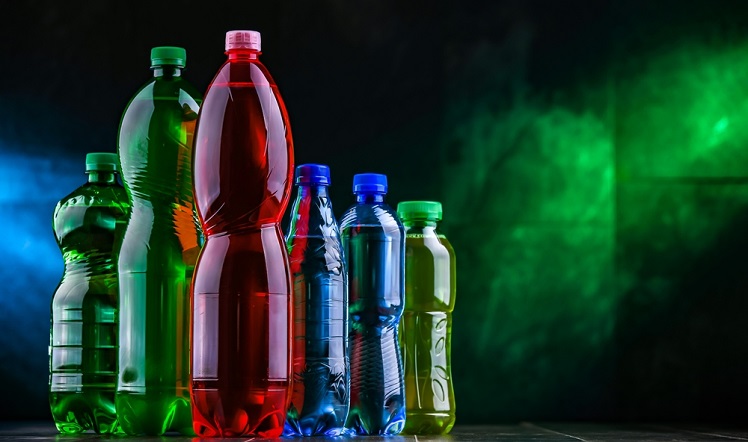The arrival of the “Age of Plastic” in the 1950s brought about a sea change in building technology. The industries began to develop a wide array of plastics from formulations in fossil fuels making them a ubiquitous component of every building assembly. And this is the beginning of our nightmare to deal with the harmful effects of non-biodegradable plastic products.
Plastic and its by-products have long found their application in virtually every corner of contemporary life-from toys to storage containers, from vehicles to electronics and much more. Because of its light-weight, strength, durability and ability to be molded in any form, it is being widely used in electronics, sports and manufacturing industries and homes. The products made from non-biodegradable plastic have added comfort and convenience to everyday lives.
However, plastic wastes do not degrade over time and have a longer-lasting effect on both humans and the entire environment in a myriad of ways. Their decomposition involves usage of heat or fire, which in return produces loads of waste, noxious fumes and takes hundreds of years to decompose.
Table of Contents
What Are Non-biodegradable Products?
Non-biodegradable products are all kinds of materials, products, by-products, or wastes that cannot be decomposed naturally by soil microorganisms. They take a very long time to be completely degraded by the soil. The studies mentioned that plastics take hundreds of years to decompose. It is, without a doubt, harmful to the environment.
Hence, we would like to provide some examples of non-biodegradable materials and products so that you can be wiser in their use.

1. Non-biodegradable Product Materials
Maybe you just think that non-biodegradable materials are just plastic. Unfortunately, several other types of materials are considered difficult to degrade. Even if it can take years! What are these materials?
- Plastic
It is the most noxious non-biodegradable, and sadly, the most popular one we almost can’t live without, plastic. Plastic is a polymer consisting of semi-synthesis and product synthesis. The polymer has a plasticity feature that makes it easy for this material to be formed into various products, such as bottles, food containers, cups, and many more.
Unfortunately, plastic is extremely difficult to decompose. How so? It is simply because the main ingredient to make this material doesn’t occur in nature.
According to WWF, plastic takes at least 200 years to fully degrade. Furthermore, plastic waste will usually be recycled to produce valuable new products. However, not all types of plastic can pass this procedure. For example, coated wrapping paper and composite.
- Glass
In addition to plastic, glass is also a complex material to degrade. It is made of a combination of sand, soda ash and limestone. The material of manufacture makes it difficult for microorganisms to decompose the glass in nature.
Much longer than plastic, it takes a million years to decompose one glass bottle! The manufacturing process also produces carbon dioxide and nitrogen oxides, which pollute the air. Fortunately, they are recyclable. Thus, it can be made into new items made of glass.
- Synthetic Fiber
Unlike natural fibers, made from cotton and wool, synthetic fibers are made from non-biodegradable materials, such as petroleum, polyester and nylon. Hence, they contribute to increasing microplastic contamination. Furthermore, nylon requires 30-40 years to decompose, while polyester takes much longer than 500 years!
Now, take a look at your wardrobe. If you have clothing made of synthetic fiber, it will very likely be sent to the landfill and end up in the ocean. And who are the victims? Of course aquatic life. Sadly, the chemical and mechanical recycle processes are not the best answer to solve this issue as they are costly.
2. Non-biodegradable Plastic Products Examples
From plastic materials, manufacturers will make various products. Without knowing it, we become active consumers of these goods. It is a complex deal, indeed. But all we can do is be wiser consumers. Hence here we tell you some plastic product examples that you can replace with other eco-friendly alternatives!

- Styrofoam
You must know one of these plastic derivative products. Yep, it’s styrofoam. Styrofoam is made of polystyrene, which is nearly impossible to degrade naturally. It takes 500 years for microorganisms to digest this material. Even worse, it can contaminate the environment and pollute the soil and groundwater.
Moreover, scientists also warn against using styrofoam for hot food because high temperatures can melt it down and release toxic chemicals to your food.
- Disposable Plastic Bags
Plastic grocery bags, plastic wraps, or garbage bags are included in disposable plastic bags. They are cheap and widely available. Thus, people use them daily without knowing the environmental effects behind the significant use of such products.
The use of disposable plastic bags is still very high even though some countries have banned them. It is recorded that around 500 billion single-use bags are used worldwide per year. Imagine just one plastic that takes hundreds of years to decompose. What about billions?
Although replacing it entirely with biodegradable products is almost impossible, at least you can lower the frequency. For example, use reusable shopping bags or switch to plant-based eco products, like cassava bags, if you are willing to spend more money.
- Plastic Water Bottle
Just like disposable plastic bags, plastic water bottles are also popular in the community. Those who are lazy to bring water from home will think it is easier when buying and throwing away the packaging. Little did they know that 75% of these bottles would be dumped into landfill or float on the ocean.
Moreover, the time it takes for the bottle to decay is 450 years. Another interesting fact is the energy spent to produce and transport these plastic bottles can fuel 1.5 million cars in a year, according to WWF. After knowing this horrendous fact, are you still thinking about continuing the “easy” lifestyle?
Pollution Problems: Negative Effects of Non-biodegradable Products
Some of the negative effects that are currently occurring as a result of this plastic pollution are soil destruction, water pollution, and animal deaths due to ingesting plastic waste. If left unchecked, this will spread to the ecosystem imbalance that threatens our earth.
Not to mention, the plastic waste that is burned produces toxic gasses that pollute the air. If so, where can we find fresh and clean air to breathe?

1. Life-Span of Non-biodegradable Materials
We want to make sure that we leave behind certain things for our children and grandchildren after we are gone. These things may include a property to inherit or a financial reserve. However, we are inadvertently framing a toxic legacy of plastic waste that will play havoc with future generations for centuries to come.
Yes, the disposable plastic products that we use every day can take over 400 years to biodegrade. The most durable plastic items like bottles, disposable nappies and beer holders can take 450 years to biodegrade. Reducing the consumption of products that generate waste material and take a long time in landfills to get completely decomposed is important.
However, the most viable alternative is to switch to biodegradable materials to save Mother Earth from escalating ecological catastrophes.
2. Ground Water and Food Chain Contamination
Long-term exposure of synthetic materials to air, water and sunlight cause the release of highly toxic pollutants that can leach into water supplies. Moreover, over time these plastics oxidize and give out poisonous copper salt that pollutes the land and enters the food chain.
These toxins are carcinogenic that can cause severe harm to the metabolism of living organisms after they are absorbed. Their consumption can even prove to be fatal for a large number of species including Homo sapiens.
3. Air Pollution
Constant exposure of plastics to heat melts those resulting in the emission of gasses into the atmosphere in a process known as outgassing. Incinerating plastic causes toxic fumes to be released into the atmosphere. Inhaling this polluted air causes different types of diseases like tuberculosis and other forms of respiratory tract infections.
Hence destroying them to reduce landfill waste is not an option. Once we recognize the harm non-biodegradable products prompt on our planet, we need to find a smart solution to address these problems. Banishing the production and use of such materials is not possible. However, alternate methods can be adopted to help the planet. Replacing conventional plastics with eco-friendly cousins is the most viable option.
How Can We Prevent Non-biodegradable Products Waste?
With the increasing number of non-biodegradable waste (8 million plastics in the ocean daily), management and preventive measures have become very important. The easiest way to prevent such waste is to utilize biodegradable products that decompose quickly by soil microorganisms. Start with small steps. For example, changing your plastic grocery bags into tote bags that can be used multiple times. Or, buy used clothes instead of new ones. What’s more? Shop fruits and veggies from local farmers because they are often packaged in plastic if you buy them at the supermarket.

In addition, be diligent in bringing food and drinks from home. Despite saving money, such actions also help reduce plastic waste from food containers and water bottles. Suppose you have a pile of non-degradable waste products and don’t know how to treat them. In that case, you can find the nearest treatment facilities that can help recycle them.
Don’t forget to separate them according to type (e.g., plastics, glass, metal, etc.) to make the recycling process easier.
Final Thoughts
There are countless harmful effects of non-biodegradable products. Their effects are starting to be felt right now. Starting from groundwater, ocean, land, and air pollution. Humans may think it’s less affected, but microplastics that break down in the soil will seep into water sources. And finally ended up being consumed.
It also applies to those in the ocean. So, let’s reduce non-biodegradable products as much as possible to delay the domino effect of using these goods. You can try to change your lifestyle gradually; for example, move on from disposable plastic bottles to Tumblr and more. If we don’t act now, how long will our planet suffer?
Latest Post:
- Bioplastic Pros and Cons: An Unbiased Examination
- Eco-Friendly Bottling: Aluminum as the Sustainable Hero?
- How to Make Bioplastic from Rice: A Step-by-Step Guide
- Eco-Tips: How to Recycle Amazon Envelopes?
- What Does Compostable Mean?
FAQ (Frequently Asked Questions)
How can these Non-biodegradable products harm the environment?
Non-biodegradable products cannot degrade naturally in the soil. Of course, it is detrimental to our environment as the wastes pollute the land and water. Not to mention the long-term domino effect on humans and animals is scary. Imagine if animals accidentally consume these products and accumulate them for a long time. They will eventually die. This phenomenon affects the balance of the ecosystem, which can endanger human life as well in the end.
Why must we use non-biodegradable materials wisely?
While biodegradable products are safe for the environment due to their nature that can easily degrade in the soil, the non-degradable materials are the exact opposite. Plastics, for example, require hundreds, if not thousands, of years to fully decompose. It is unrealistic for the earth’s current condition to suffer from climate change.
These materials can pollute the soil and water and endanger wildlife and the ecosystem. Hence, you need to use non-biodegradable materials wisely or change them to biodegradable ones.
